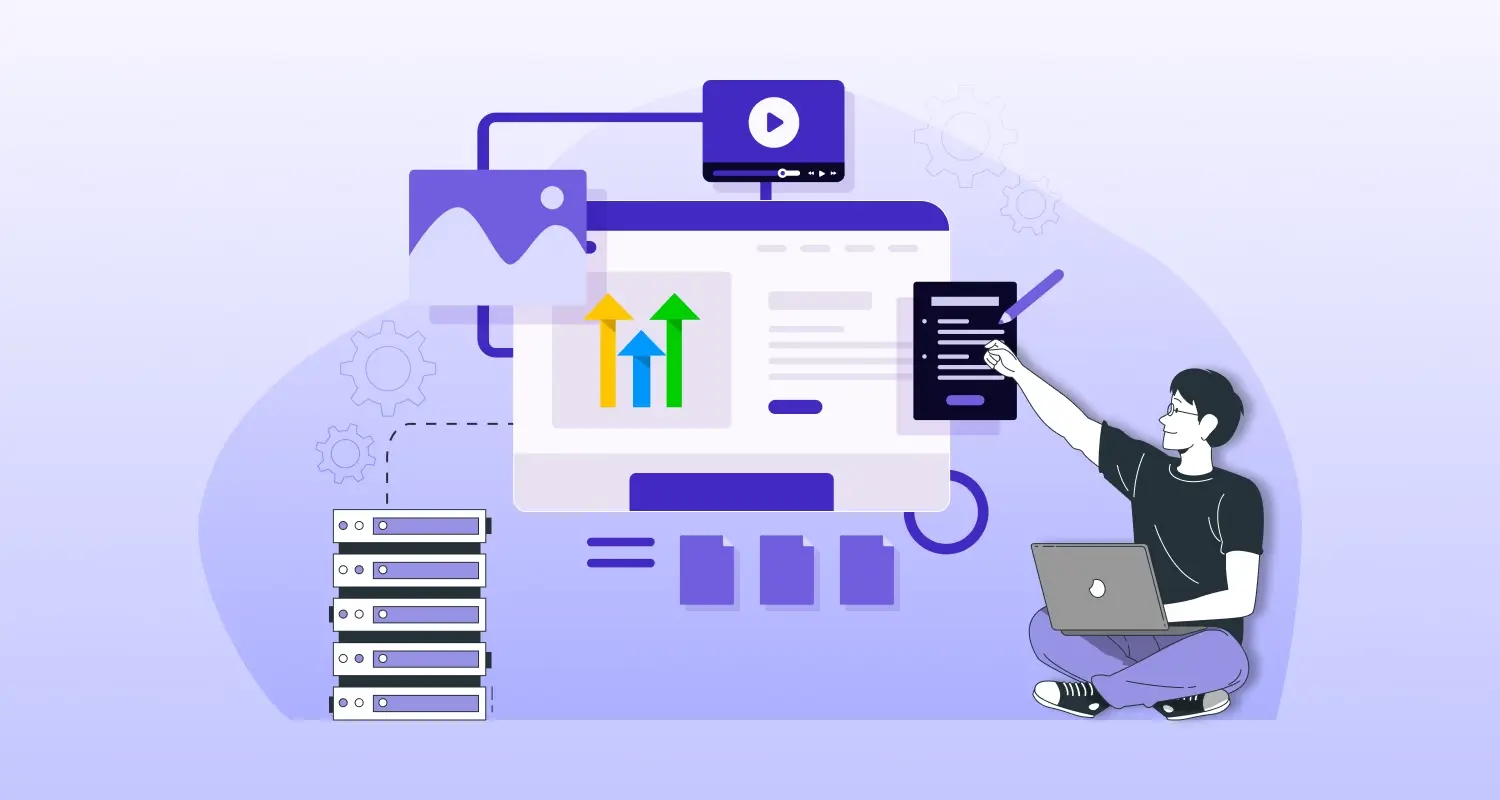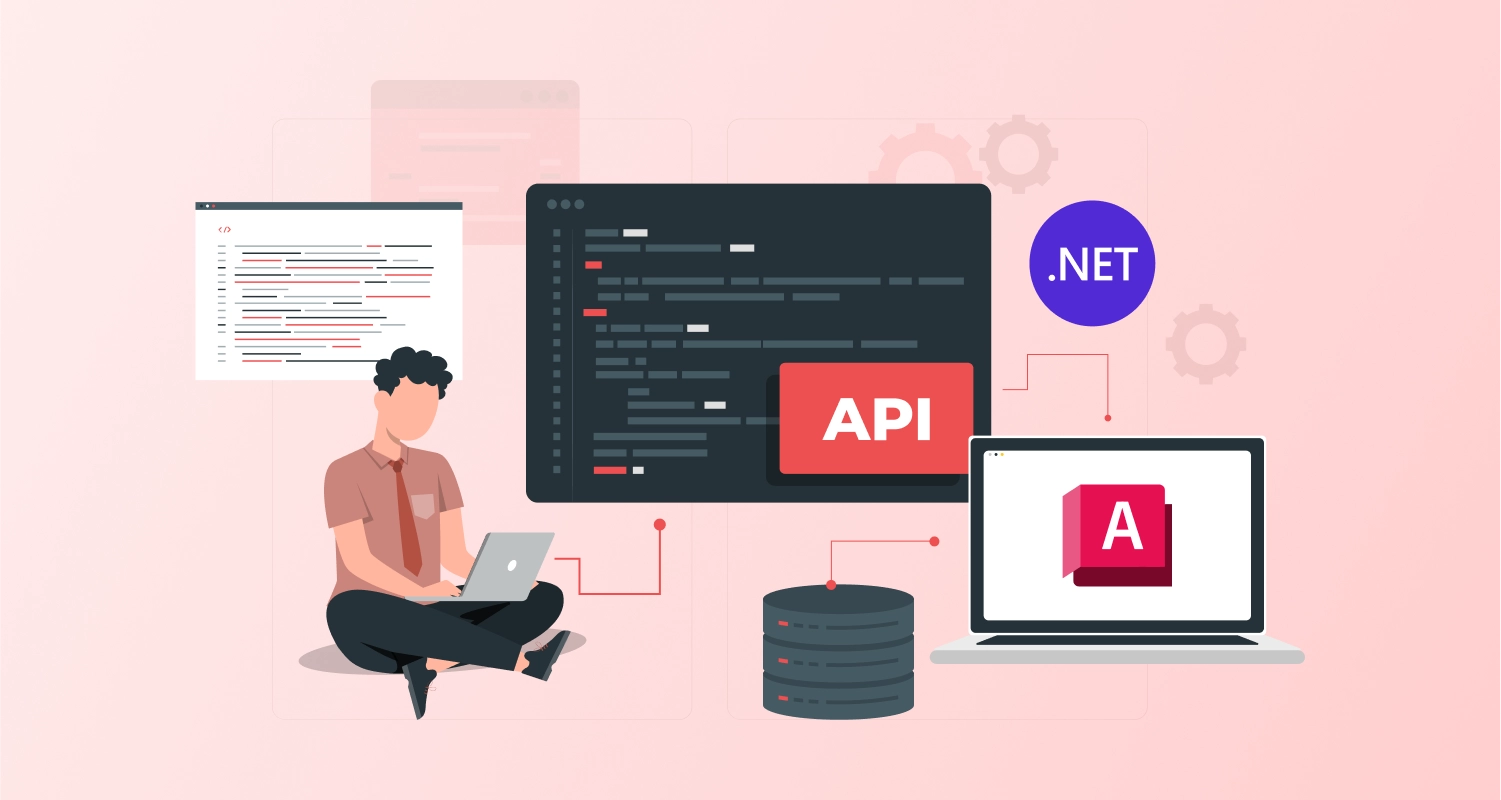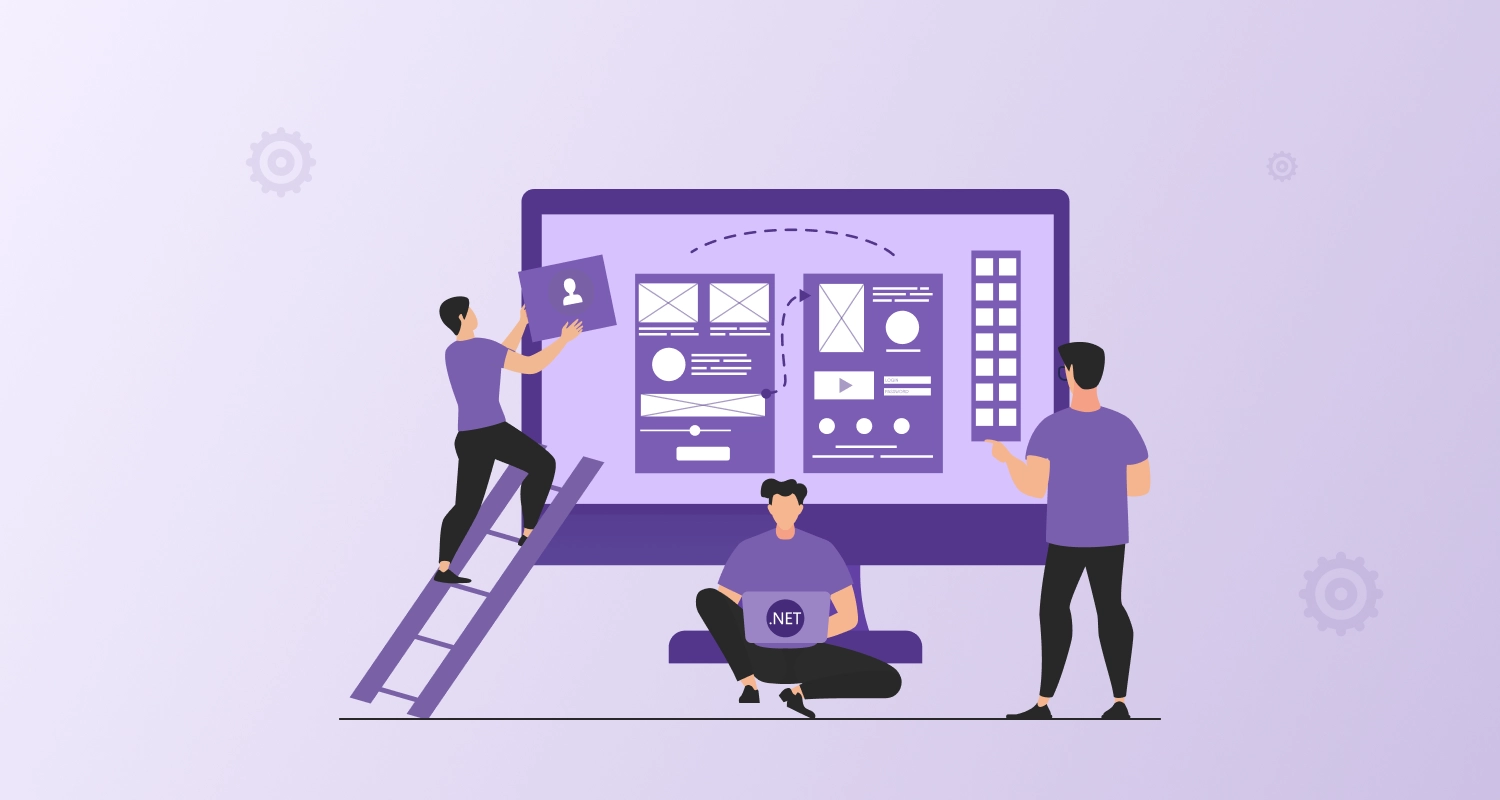Web API development is essential because it makes it easier for various software systems to communicate with one another and share data. As a leading web app development company, harnessing the power of APIs for websites and web applications is crucial to building robust and scalable solutions.
The API market is growing at a CAGR of 25.1% and will reach $13.7 billion in the next five years.
Web API development is the process of creating Application Programming Interfaces (APIs) that can be accessed online. These APIs serve as a set of rules and instructions that enable various software applications to communicate and cooperate. Web APIs encourage seamless connectivity by defining data access methods, performing activities, and integrating functionality across a variety of platforms.
So, what do you think the web API work like?
A simple example of the API working is food ordered at a restaurant. The waiter here is the API as he takes the order from you and passes it to the kitchen. As the request is placed and as a response, you will get the food at your table.
What is Web API Development?
Application programming interface, or API, is the term used to describe the interface that enables communication between software programs. An API that can be accessed on the web using the hypertext transfer protocol (HTTP) is referred to as a web API. It serves as a framework for building HTTP-based RESTFUL services.
API integration service can be used to access a web API. The web server receives requests from a variety of client devices, including mobile phones and laptop computers, processes the requests, and then returns the desired output to the client.
What are the Benefits of Web API Development?
The development process is improved and opens up new possibilities when the best API for web development is used. Here are a few significant benefits:
Reusability and Efficiency: The development of Web APIs encourages the reuse and effectiveness of programming. Developers can avoid starting from scratch by using APIs to access pre-existing services and functionality. As a result, developers may concentrate on the main logic and features of the application, saving time, effort, and resources.
Seamless Integration: APIs are made to make the integration of various software systems easier. Online APIs make it possible for online applications to communicate and exchange data with other programs, databases, and other external systems.
Performance and Scalability: Web APIs are designed to accommodate a large number of queries and scale with rising user demand. The back-end API and the front-end web application can be scaled separately by developers by keeping them apart. This scalability guarantees top performance, even during moments of peak traffic, and gives users a dependable and responsive experience.
Platform and Device Independence: Web APIs are accessible from a variety of devices, including desktops, laptops, tablets, and smartphones. They are platform-neutral. Due to their ability to function flawlessly across many platforms and devices, cross-platform and cross-device compatible web applications enable developers to reach a larger audience and improve accessibility.
Types of API Web Development
Developers can use a variety of APIs to build a web application, depending on their unique requirements and demands. The following are a few of the popular API types used in web application development:
Web APIs (HTTP APIs)
These APIs, sometimes referred to as HTTP APIs or Web APIs, enable online communication between various web services or applications. They are often created utilizing HTTP protocols and RESTful principles, allowing clients to interact with server-side resources by sending HTTP requests.
For example, Google Maps API, Twitter API, and Facebook Graph API.
XML-based SOAP (Simple Object Access Protocol) APIs:
A messaging standard for sharing information between systems and applications is called Simple Object Access Protocol (SOAP). An application programming interface (API) called a SOAP API is created in a more organized and formalized manner than other APIs.
Consider SOAP to be similar to the US Postal Service: It offers a trustworthy and dependable mechanism to communicate between systems (and within business applications). Although it is more seasoned, reliable, and established than rival architectural trends like REST, it can occasionally be slower.
For example, Amazon Web Services (AWS) API, eBay API, and PayPal API.
RESTful APIs:
Safe online information exchange between two computer systems is made possible by RESTful APIs. To carry out various duties, the majority of business apps must interface with other internal and external applications.
For example, GitHub API, Slack API, and Stripe API.
Open APIs
Any developer or company can utilize open APIs, often known as external APIs or public APIs. Open APIs generally have weak authentication and authorization controls, and the resources they share are commonly constrained as a result.
Most API keys are open, and these APIs may require registration in order to access their data and services.
The opportunity to freely exchange data is one of the main advantages of making APIs public. As a result, the value of both the third-party software and the API is increased because it encourages any outside company or developer to interface with the app that controls the API.
For example, OpenWeatherMap API, Spotify API, and Twilio API.
Private or internal APIs
Internal APIs, in contrast, to open APIs, are not meant for usage by outside users. They allow various teams or departments inside top organizations to leverage one another’s resources, information, and software.
In comparison to conventional integration methods, internal APIs have a number of benefits, such as security and access control, a system audit trail, and a uniform interface for integrating various services.
Partner APIs: Like open APIs, partner APIs are likewise shared externally, but only with parties who have commercial ties to the API provider. Access is only permitted for clients with valid licenses.
As a result, partner APIs often have tighter security features than public APIs. Partner APIs are employed when you want to have control over who has access to your resources and how they are used.
For example, Salesforce Partner API, Dropbox Partner API, and HubSpot Partner API.

How to Develop an API – 5 Simple Steps
Hire Full-Stack Developers and Define the Requirements
If you want to establish an API for a website, the first step is to determine the needs of the API, including its purpose, functionality, and the data and actions it will expose. Consider the requirements for security and authentication as well. Working with seasoned full-stack developers who can guide you through the development process and ensure the API meets your requirements is advised.
Step 2: Design the API architecture
The design of the API architecture is crucial for a successful implementation. Pick a design strategy like RESTful or GraphQL that is appropriate for the demands of your project. Create the endpoints, data structures, and formats for the request and response payloads.
Step 3: Create the API backend
Set up the API backend with the experts you recruited. They will apply their expertise in backend development by using appropriate programming languages and frameworks, such as Node.js with Express or Python with Django. They may assist you in ensuring that the API logic is developed properly and can handle HTTP requests and responses.
Step 4: Implement Strict API Security Measures
It is essential to safeguard your API. Put in place efficient security measures with the aid of your full-stack engineers. Manage API access and protect sensitive data by using API keys, OAuth, or JSON Web Tokens (JWT) as authentication mechanisms. Verify the API’s safety.
Step 5: Examine and record the API
Testing and documentation are both required during API development. Together with your full-stack engineers, conduct extensive testing to ensure that the API functions as intended and to its maximum potential. At the same time, thoroughly document the API by adding in-depthdocumentation, endpoint descriptions, request/response samples, and any required parameters. With the help of this documentation, other developers will be able to interact with the API with ease.
Following these five steps will help you construct a dependable API for your website: defining requirements, designing the architecture, working with full-stack developers to build the backend, implementing security measures, and thoroughly testing and documenting the API. Employing competent full-stack developers enables you to utilize their expertise to meet the API objectives.
How Much Does it Cost to Create an API for a Website?
The average price for building an API is $25 to $35 hourly. This is just the price of development. A crucial phase in the software development process is the creation of APIs. Therefore, carefully assess the resources you are willing to commit. Finding out how much money is needed for development is a common occurrence. You should also consider the cost of hosting and upkeep. The number of calls made to your API will determine the cost of the API Gateway.
Best Web API Development Tools
There are many top-notch API development tools accessible, each with a unique set of capabilities and benefits. Three of the top API development tools are listed below:
Postman: A platform for developing APIs is called Postman. You can design APIs more quickly and effectively because it streamlines cooperation and makes every phase of the API lifecycle simple.
SoapUI: Developers may test REST, SOAP, GraphQL, and Web Services with SoapUI, an API testing tool. SoapUI offers development and testing teams a potent tool for designing, executing, and debugging sophisticated web service tests. Test reports, SOAP API testing, and other special capabilities are only a few of SoapUI’s features.
Apigee: Apigee is a complete API management platform that provides end-to-end solutions for API development and lifecycle management and is currently part of Google Cloud. It offers a wide range of capabilities, such as API development, design, security, analytics, and monetization. Organizations can build, publish, and manage APIs at scale with Apigee, which guarantees excellent performance, security, and visibility.
Paw: Paw is a robust API development tool made especially for Macs. It provides a visual interface with support for several protocols and authentication techniques for creating and testing APIs. Paw offers sophisticated features like collaborative sharing choices, dynamic values, and code development.
RapidAPI: RapidAPI is an API management platform and marketplace that provides a significant selection of APIs from various suppliers. It offers a uniform interface for discovering, integrating, and managing APIs for developers. A variety of tools and functionalities are offered by RapidAPI for API testing, documentation, and subscription management.
Conclusion
You now have an extensive knowledge of web APIs, including how to utilize them in online applications and the things to take into account while creating one.
Still not convinced?
CMARIX will help you create a safe API by guiding you through every step of the procedure. We are a web application development company that works with startups, small enterprises, and independent contractors. We make sure the application is created in a safe environment.
Frequently Asked Questions
How Much Does It Cost to Create an API from Scratch?
The price of starting from scratch when developing an API varies depending on the complexity, functionality, and the development time. If you hire web developers, they may give you a precise cost estimate that takes into account your unique needs.
What is the purpose of an API?
An API’s function is to facilitate communication and interaction between various software applications or systems, enabling easy data interchange and access to features.







